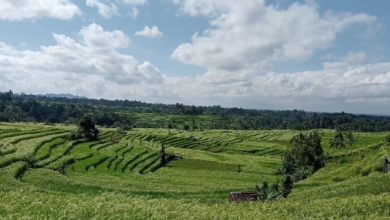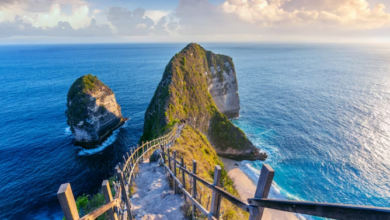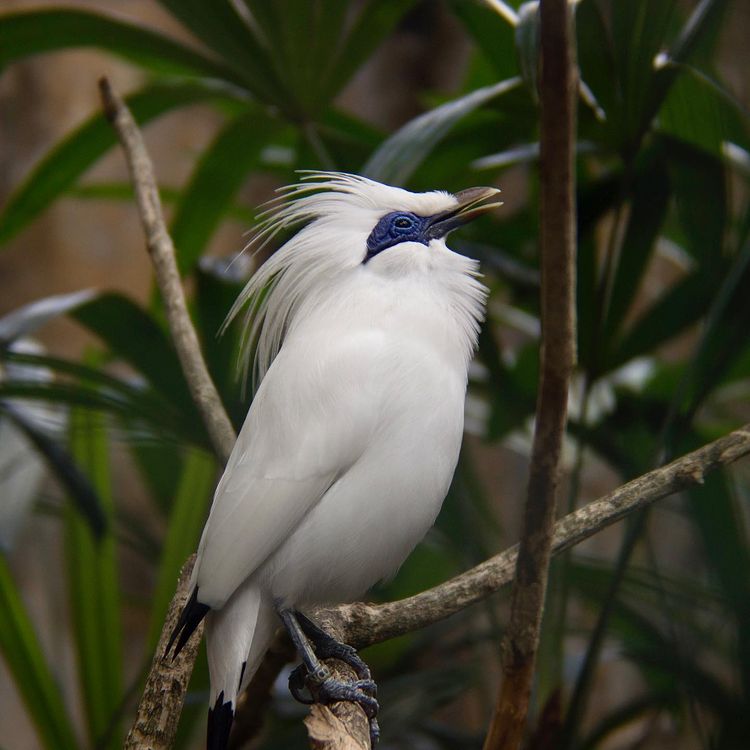
The White Singer of the Land of the Gods, Jalak Bali
Table of Contents

Visa Bali Info – Jalak Bali (Leucopsar rothschildi) is a kind of medium-sized songbird with a length of approximately 25 cm from the Sturnidae tribe. He is also known as Curik Rather than Jalak (wikipedia).
This endemic animal once held the title of an endangered bird. In fact, this bird known as the white starling or curik in the 90s was almost extinct due to rampant illegal trade.
Leucopsar rothschildi / Jalak Bali
Did you know that the Jalak Bali was only described scientifically in 1912. The figure who was instrumental in bringing the Jalak Bali to the world of science was an English zoologist, Walter Rothschild. He first discovered the Jalak Bali and researched it in 1910.
He then described this exotic animal native to the island of Bali to the world of science in 1912. This bird is classified in the Sturnidae tribe.
Bali starlings are animals that are prohibited from being traded, except from captive breeding from the third generation (breeders are not from nature). In 1991, this endemic animal officially became the mascot of the island of Bali.
The characteristics of the Jalak Bali
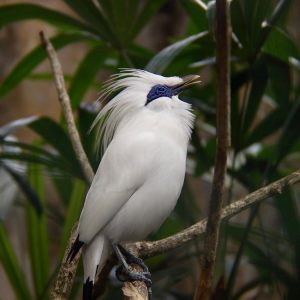
This leucopsar bird can be recognized by the color of its clean white feathers. They can grow up to 25 cm and weigh 107.75g.
The blue color of the eyelids is also a feature of this Jalak Bali. Thanks to the beautiful combination pattern that makes this bird an exotic animal.
The beak can grow up to 2-3 cm, at the end of the beak there is a brownish yellow pattern with the jaw part gray-black.
This group of leucopsar rothschildi has black tail feathers 25mm wide, with the number of feathers reaching 17-18 strands. With the number of wing feathers ranging from 11-12 strands.
When measured, the average length of the head of a Balinese curvy reaches 5 cm. The neck measures only 2 cm, wings 13 cm, tail length 6 cm, leg length excluding thighs about 4 cm.
Jalak Bali Habitat
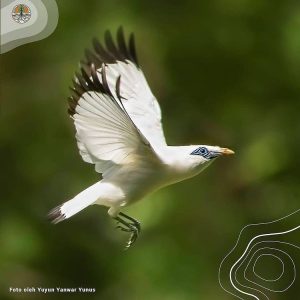
Jalak Bali like the habitat of mangrove forests, swamp forests, lowland monsoon forests and savanna areas.
Although now you can find them in the West Bali National Park, in the past the distribution of the Bali starling was in the areas of Tegal Bunder, Red Light, Batu Gondang, Prapat Agung, Batu Licin, and Teluk Brumbun.
The natural character of the Jalak Bali is also cheerful, so they love to sing. This also makes them hunted by humans, and causes the population in their natural habitat to be threatened.
Around 1970, the Jalak Bali was very popular with chirping bird hobbyists or collectors of rare animals. So many hunted until the number in their natural habitat was only 112 tails.
The government decided the Jalak Bali as a bird protected by law, based on the Decree of the Minister of Agriculture Number 421/Kpts/Um/8/1970 dated 26 August 1970, and Government Regulation Number 7 of 1999 concerning Preservation of Plant and Animal Species.
Jalak Bali Breeding
Now many people are trying to catch the Jalak Bali. Jalak Bali breeding can be found in various areas. However, the official captivity set by the government is in the West Bali National Park area.
The head of the West Bali National Park (TNBB), Drh Agus Ngurah Krisna Kepakisan, said that until March 2021 there had been 397 Jalak Bali recorded in the TNBB area.
There are six villages in the West Bali National Park area that breed Bali starlings, namely Sumberklampok, Pejarakan, Blimbingsari, Ekasari, Melaya, and Gilimanuk villages.
Breeding is also found in Nusa Penida, you can find a large Jalak Bali breeding in Nusa Penida around Ped Village.
This breeding was initiated by the Friend of National Parks Foundation (FNPF), a foundation that is active in the Jalak Bali release program in Nusa Penida.
The geographical location of Nusa Penida which is isolated from the island of Bali has advantages such as the variety of fruits and insects.
Jalak Bali are also protected by the existence of awig-awig (customary rules) in Ped Village. So don’t be surprised if you visit Nusa Penida you will find a lot of Jalak Bali.
This native endemic to Bali, Indonesia, we must protect. The beauty that is in them does not mean we can lock them in a cage.
Enough to see the Bali starlings in their natural habitat, they will be spared again from extinction.
Bali Visa Agency : www.visa4Bali.com – Experienced specialists managing the entire application process from start to finish.




